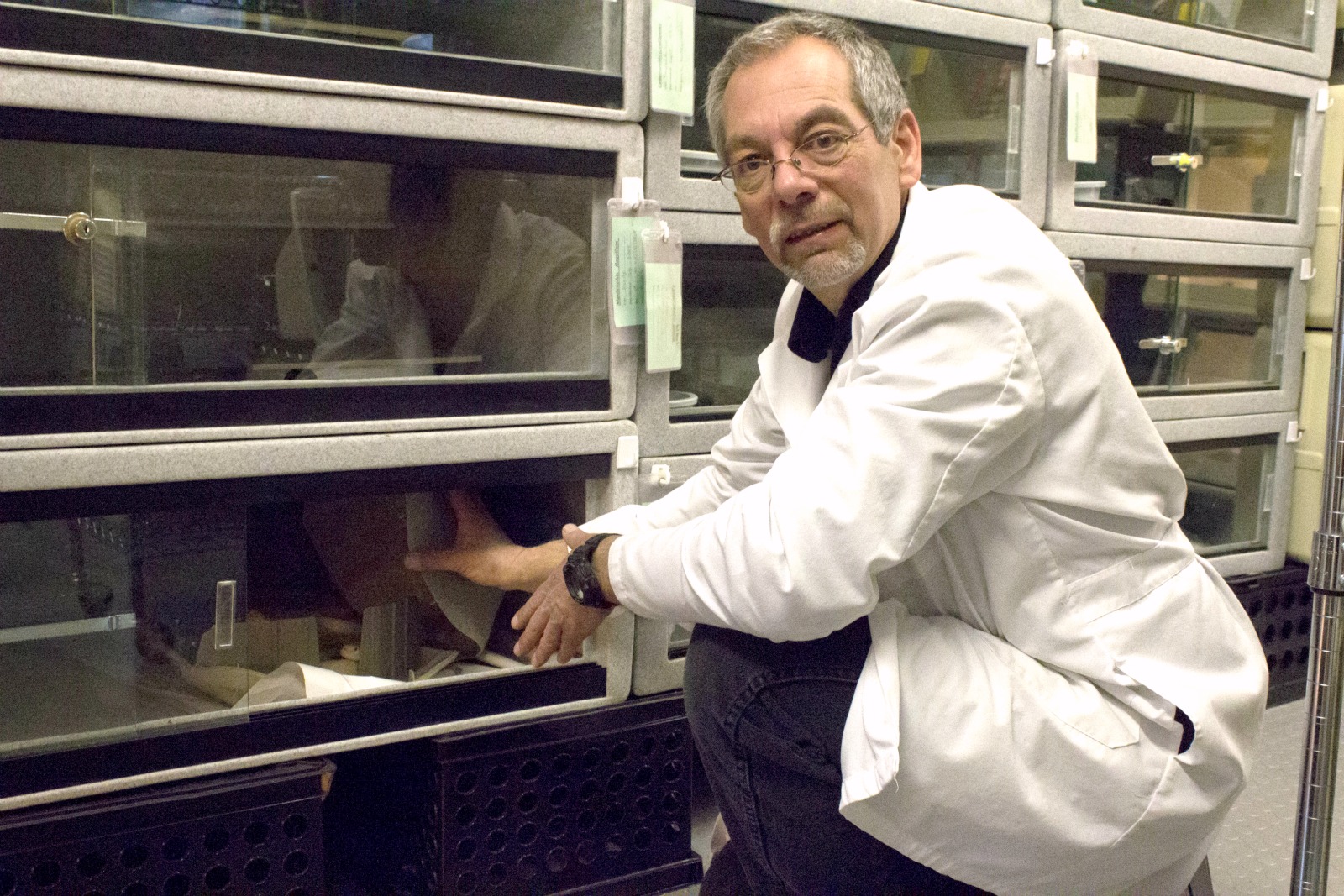
The warm lab smells like a meadow after rain, simultaneously damp and crisp. To the left, tanks containing salad-plate-sized turtles cycle filtered groundwater, the sound of the running water filling the room. To the right, lizards relax beneath light-baked tiles. In the corner, terrariums containing rattlesnakes bear signage alerting danger. Non-venomous snakes peek heads out of plastic hovels or inquisitively approach the confinement’s glass. And at the heart of all this life stands Dennis Ferraro.
School of Natural Resources’s resident herpetologist, Ferraro is responsible for studying and caring for UNL’s reptile and amphibian populations. His research interests extend from helping create an app that will allow hikers to identify a species of snake with a photo to chemotherapy treatments for reptiles with cancer. With snakes hibernating in the cooler and an amphibian laboratory under construction, Ferraro’s lab juggles numerous projects. But he wouldn’t have it any other way.
“Nebraska’s home to 29 species of snakes, 10 species of lizards, 11 types of frogs or toads, and 9 species of turtles,” explained Ferraro. “A lot of those species are in jeopardy of becoming endangered, so I conduct research on how to help conserve populations.”
In some instances, “conserving populations” means developing veterinary protocols for treating sick turtles in the wild. “A lot of veterinary protocols don’t exist yet,” said Ferraro, “so we’re developing procedures for diagnosing the disease before ill-effects become apparent and for providing treatments. That’s one of our projects.”
Another project consists of determining how venomous snakes strike and procure their prey—whether the snakes sense temperature or specifically target a certain region of the body. Depending upon the answer, zoologists may know how to better feed captive animals and foster populations’ rehabilitation.
With certain species, captive reproduction plays a vital role in survival. One example Ferraro points to is the Blanding’s turtle. This species frequently does not mate until it is 25 or 30 years old. “But their mortality rate is 90% within the first year of life,” explained Ferraro. So a process called “head starting” helps juveniles mature beyond the first year of life. “That way,” said Ferraro, “they’ll have a better chance of surviving until they are old enough to reproduce in the wild.”
On his team are 2 UCARE researchers, and 3 independent-studies students. These student-partners help Ferraro run the lab and maintain the health of the animals while also doing their research. “Some of the research is in the lab,” said Ferraro, “but we also do a lot of field studies both in Lincoln and all over the state.”
Photos of past and current experiments punctuate the lab’s hallways. Some depict studies conducted on stomach contents, others show Ferraro performing surgery on snakes.
“We’ve got probably the only snakes in the world who have had MRIs,” Ferraro said with a smile. These snakes were diagnosed with cancer, Ferraro explained, which is problematic for species’ rehabilitation. “Imagine if you’re trying to rebuild a population in captivity and one of the only breeding snakes is diagnosed with cancer. If it’s an endangered species, that’s one more snake that will die before it reproduces. So we’re trying to develop a treatment procedure for these animals to give them a shot at survival.”
Watching Ferraro handle the animals, one could not second guess his passion for what he does. Snakes gracefully spiral in his hands, the snakes’ movements anticipated by the herpetologist. Turtles follow his fingers along the glass, responsive to their keeper. Ferraro knows when they’re hungry or sick or anxious with a glance. He tries to create such knowledge—and passion—in his students.
With teaching, extension, and advising duties, Ferraro wears many caps around UNL. But his first and foremost priority is to instill public awareness and appreciation of a great natural resource—the invaluable biodiversity that includes reptiles and amphibians. “Why wait until the species is endangered to bring it back?” he asks.
Whether he’s advocating for public-work programs to develop corridors for turtles or management plans for rattlesnakes on public lands, perhaps it can be said that Ferraro’s biggest task is to rehabilitate human’s relationships and sense of responsibility for the reptiles and amphibians who live all around.
-Michelle Hubele Rubin